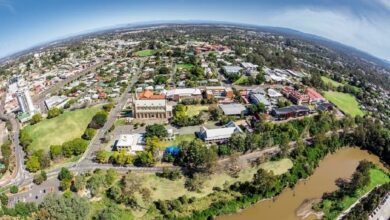Fire ants are making their way into our territory again, and for Ipswich City Council officers in the field, that means war. In this explainer, Brad Weier explores where fire ants come from, why they’re a problem, and what local and state government officials are doing to get rid of them.
Video on the physics of fire ants
It’s pretty heavy stuff, so to lighten the mood, here are some ant-man bloopers
What are fire ants?
The term ‘fire ant’ is the common name for several species of ants from the Solenopsis genus. Native to South America, they are copper-brown in colour and vary in size from 2mm to 6mm.
Why are they such a big deal?
The ants are one of the world’s most invasive species. They are highly aggressive and their bites cause a burning sensation in the body. Pets and domestic animals can also be stung and blinded by exposure to the venom. Fire ants are predatory, attacking insects and animals that pollinate native plants. They kill crops and plants by tunnelling through root systems and stems.
How did they get here?
Fire ants entered the US in the 1930s and it’s believed they hitched a ride to Brisbane on board a shipping container from the States in 2001.
Where have they been found?
The ants were first found in the Ipswich area in 2001. They have since been found in the Logan, Redlands, Scenic Rim and Lockyer Valley areas as well as the northern reaches of the Gold Coast. Only two suburbs in Ipswich are not impacted by fire ants – Ironbark and Pine Mountain.
How do they spread?
Fire ants spread naturally through mating flights and budding. A mated queen can fly up to 2km and can lay up to 800 eggs per day. Newly mated females then leave the nest to start more colonies. Fire ants also spread via infested soil, mulch, manure, baled hay, pot plants, turf and poultry litter.
What do their nests look like?
Nests are often dome-shaped and can be up to 40cm high. They’re usually found in open areas but they can also be built under logs or rocks and can look like patches of disturbed soil. The nests have no obvious entry hole and the interior has a honeycomb structure.
What is Ipswich City Council doing to control them?
Council has established a Risk Management Plan with Biosecurity Queensland. Trained field officers regularly inspect council depots, nurseries and worksites for fire ants and report findings to Biosecurity Queensland.
What does Biosecurity Queensland do?
Biosecurity Queensland is the state body leading the National Red Imported Fire Ant Eradication Program. It uses a low-toxic bait treatment to target nests and worker ants and sterilise the queen.
How does the bait treatment affect humans and animals?
The treatment has a very low toxicity to humans and animals. It is distributed at a rate of about one teaspoon per square metre and breaks down within about 24 hours. The baits are the same as those used in mosquito control programs (S-methoprene) and pet flea collars (pyriproxyfen).
Why can’t I use boiling water, petrol or kerosene to control them?
Because it’s dangerous, silly and won’t kill the colony. If you find fire ants call Biosecurity Queensland on 13 25 23 and leave eradication to the experts.
What should I do if I get stung by a fire ant?
Apply ice to the affected areas to reduce swelling and relieve pain. A small blister will form around each sting so wash it gently with soap and water to reduce the risk of infection. Be careful not to break the blisters. Seek immediate medical attention if a severe allergic reaction occurs.
How do fire ants impact the environment?
More than 50 Australian-grown crops like corn, citrus, sugarcane and cotton are affected by fire ants. They also feed on small ground fauna including insects, spiders, lizards, birds and mammals and have the potential to wipe out entire species. So-called ‘super colonies’ have even been known to eat livestock like lambs and chickens.
What about the economic impact?
The Australian Bureau of Agricultural and Resource Economics says fire ants will cost the south-east of the country more than $45 billion over the next 30 years if they are not controlled. Other studies show more than 20 Australian industries will be impacted including agriculture, tourism, livestock and sports.


4.5